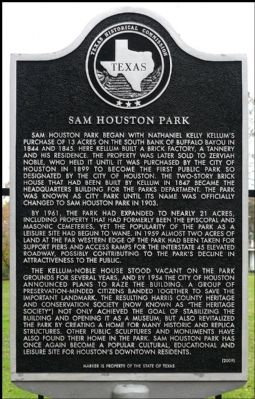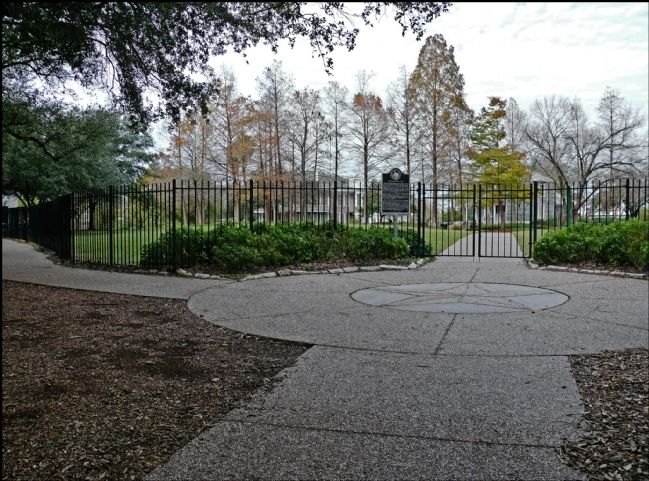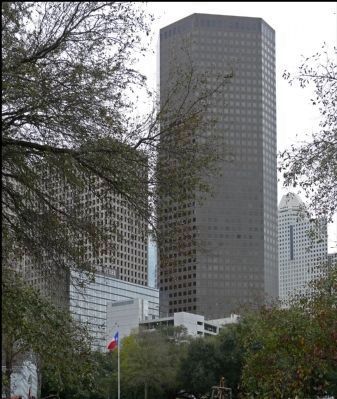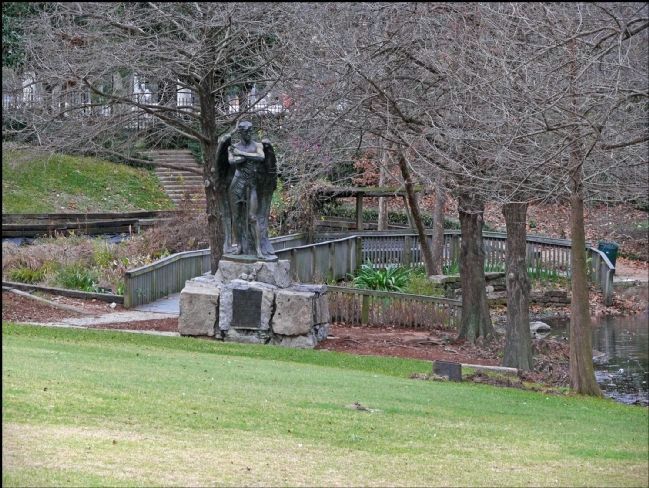Downtown Houston in Harris County, Texas — The American South (West South Central)
Sam Houston Park
By 1961, the park had expanded to nearly 21 acres, including property that had formerly been the Episcopal and Masonic cemeteries, yet the popularity of the park as a leisure site had begun to wane. In 1959 almost two acres of the land at the far western edge of the park had been taken for support piers and access ramps for the Interstate 45 elevated roadway, possibly contributing to the park's decline in attractiveness to the public.
The Kellum-Noble house stood vacant on the park grounds for several years, and by 1954 the City of Houston announced plans to raze the building. A group of preservation-minded citizens banded together to save the important landmark. The resulting Harris County Heritage and Conservation Society (now known as “The Heritage Society”) not only achieved the goal of stabilizing the building and opening it as a museum, but also revitalized the park by creating a home for many historic and replica structures. Other public sculptures and monuments have also found their home in the park. Sam Houston Park has once again become a popular cultural, educational and leisure site for Houston's downtown residents.
Erected 2009 by Texas Historical Commission. (Marker Number 15758.)
Topics. This historical marker is listed in this topic list: Notable Places. A significant historical year for this entry is 1844.
Location. 29° 45.576′ N, 95° 22.246′ W. Marker is in Houston, Texas, in Harris County. It is in Downtown Houston. Marker is at the intersection of Bagby Street and Lamar Street (Allen Parkway), on the left when traveling north on Bagby Street. Touch for map. Marker is in this post office area: Houston TX 77002, United States of America. Touch for directions.
Other nearby markers. At least 8 other markers are within walking distance of this marker. Houston City, Republic of Texas (within shouting distance of this marker); World War I Monument (within shouting distance of this marker); Alexander Hodge (about 300 feet away, measured in a direct line); Ancient Order of Pilgrims (about 300 feet away); Sons of the Republic of Texas (about 300 feet away); Nichols-Rice-Cherry House (about 400 feet away); Kellum-Noble House (about 500 feet away); Pillot House (about 500 feet away). Touch for a list and map of all markers in Houston.
Regarding Sam Houston Park. Though tours and the museum have restricted times, the web page for the park says it's open "dawn to dusk" every day, but when we made a special trip there on December 30 every gate was locked.
Also see . . . Sam Houston Park. Wikipedia (Submitted on January 1, 2013, by Jim Evans of Houston, Texas.)
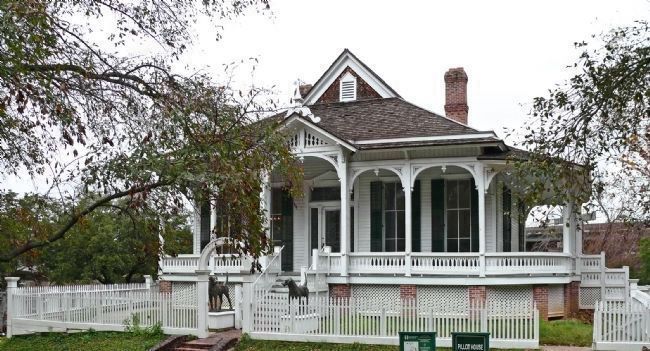
Photographed By Jim Evans, January 27, 2013
3. Pillot House in Sam Houston Park
The 1868 Pillot House was built by Eugene Pillot and was originally located at 1803 McKinney. This house is an example of the Eastlake Victorian style. The repetitive balusters and two dimensional cut-out ornamentation seen on the house were made possible by new machinery of the time period. Architectural enhancements such as full-length windows and wrap-around porches illustrate how residences were adapted to the harsh climate of Houston.
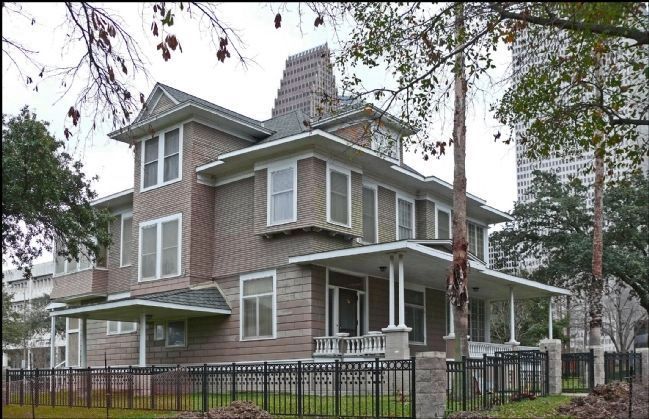
Photographed By Jim Evans, January 27, 2013
4. Staiti House in Sam Houston Park
Built in 1905 in the Westmoreland Addition as a speculative house it was purchased by oil pioneer Henry T. Staiti. The 17-room house included the latest features, electricity, and had professional landscaping. The house was redesigned by Alfred Finn in 1915. The house was moved into Sam Houston Park in 1986.
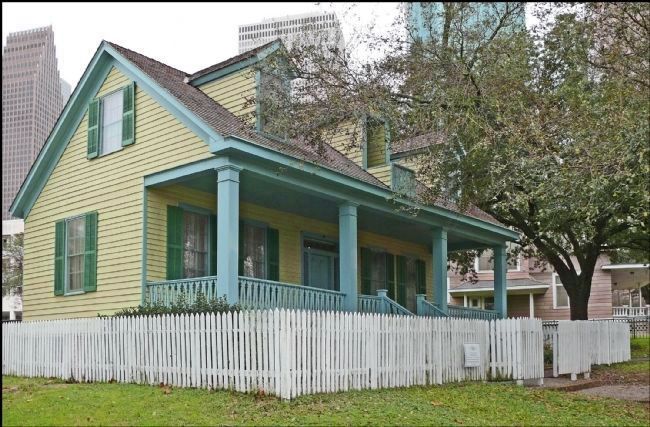
Photographed By Jim Evans, January 27, 2013
5. San Felipe Cottage in Sam Houston Park
The 1868 San Felipe Cottage is an example of the vernacular architecture of Houston’s German population of the late 19th century. Originally located at 313 San Felipe Road, the structure was moved to Sam Houston Park in 1972. Primarily a repository of Texas furniture, San Felipe illustrates the cultural legacy of the German working class, one of the predominant cultural groups in Texas.
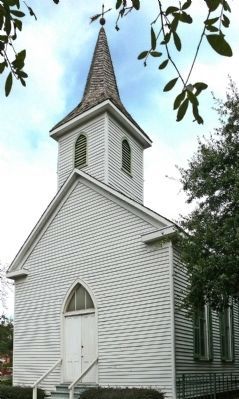
Photographed By Jim Evans, January 27, 2013
6. St. John Church
The 1891 St. John Church was built by German farmers in northwest Harris County for their Evangelical Lutheran congregation. The church is a vernacular interpretation of the Gothic Revival style of architecture from the 19th century. Elements of the Gothic Revival style are evident in the church’s arched windows and shutters. The structure was moved from its original site on Mangum Road to Sam Houston Park in 1968. The handmade cypress plank pews in the interior attest to the “can do” spirit that built this elegantly simple place of worship.
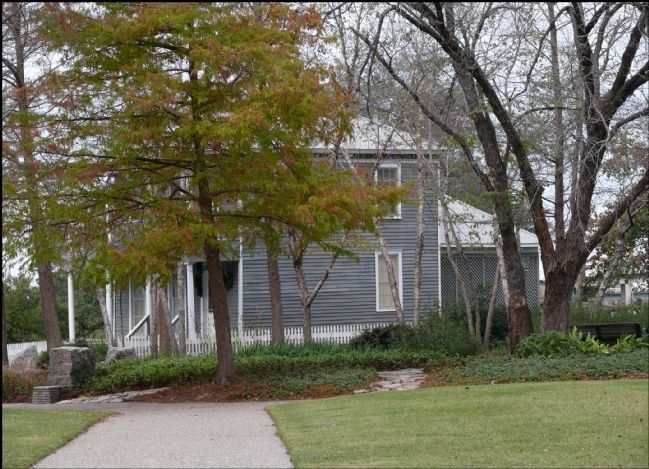
Photographed By Jim Evans, December 30, 2012
8. Yates House in Sam Houston Park
The park contains several historic structures. Among them the Yates House which can be seen from the fence near the marker. The reference below to Freedmen's Town refers to a section of Houston that became populated by African Americans after emancipation.
The 1870 Yates House is a simplified example of the Greek Revival style, with a symmetrical, full facade first and second story porch that is supported by Tuscan columns. Originally built by Reverend Jack Yates at 1318 Andrews Street in Freedmen’s Town, the structure was donated to The Heritage Society and moved to Sam Houston Park in 1994. Construction of this house a mere five years after Emancipation illustrates the indomitable spirit of a formerly enslaved population that was transitioning into a free society in Houston.
Credits. This page was last revised on February 1, 2023. It was originally submitted on December 31, 2012, by Jim Evans of Houston, Texas. This page has been viewed 1,024 times since then and 43 times this year. Photos: 1, 2. submitted on December 31, 2012, by Jim Evans of Houston, Texas. 3, 4, 5, 6, 7. submitted on January 28, 2013, by Jim Evans of Houston, Texas. 8. submitted on December 31, 2012, by Jim Evans of Houston, Texas. 9. submitted on January 28, 2013, by Jim Evans of Houston, Texas. • Bernard Fisher was the editor who published this page.
